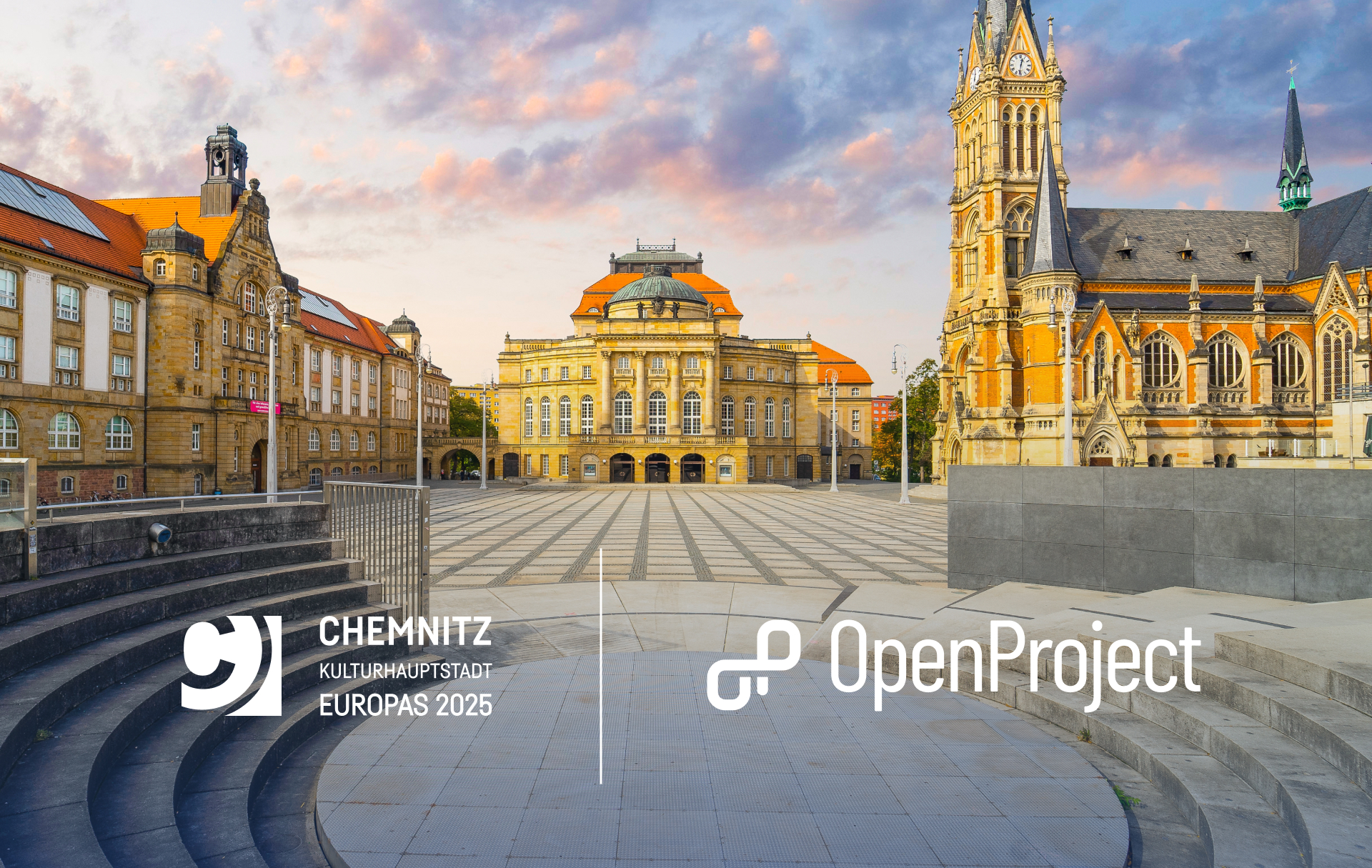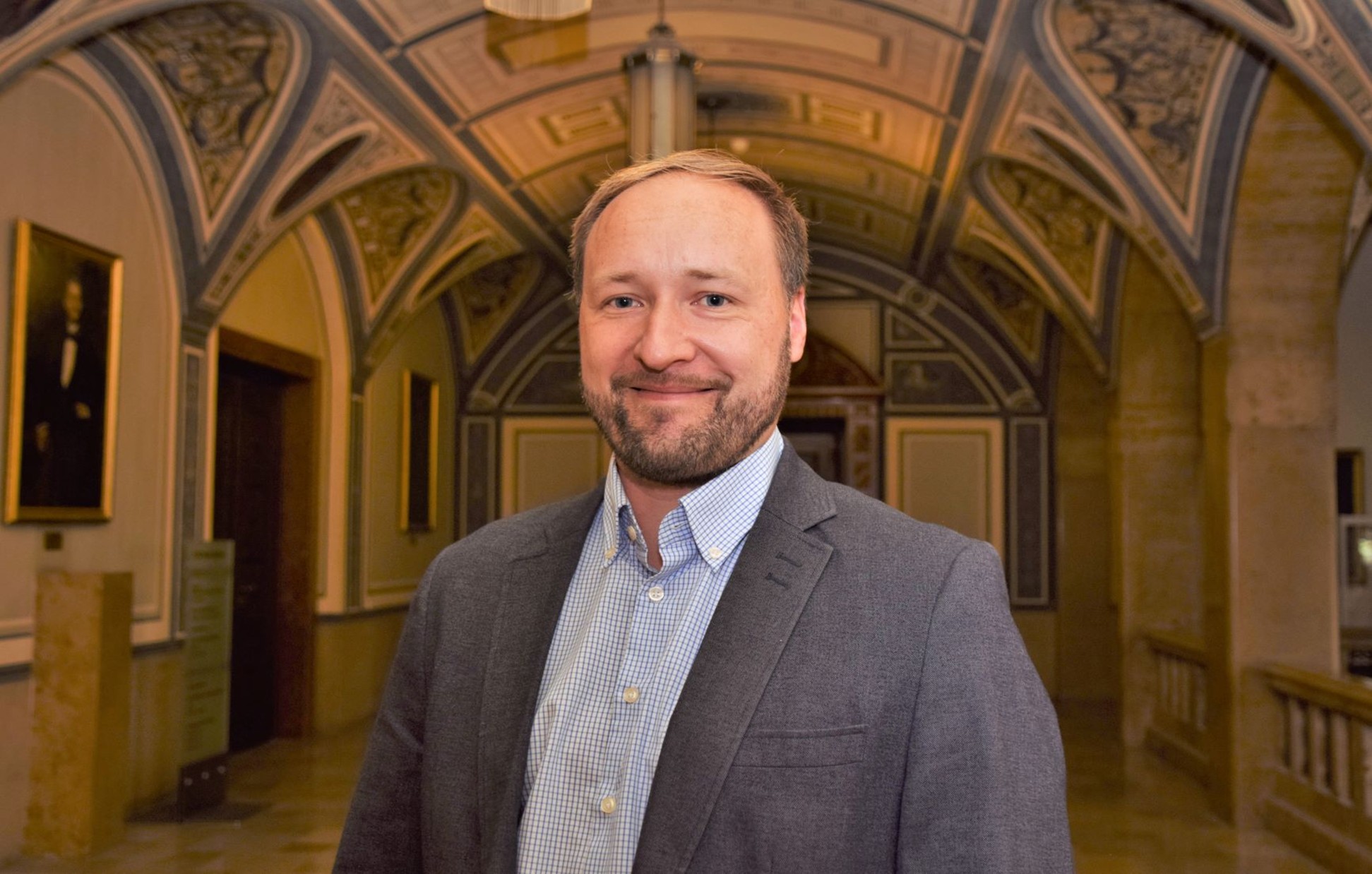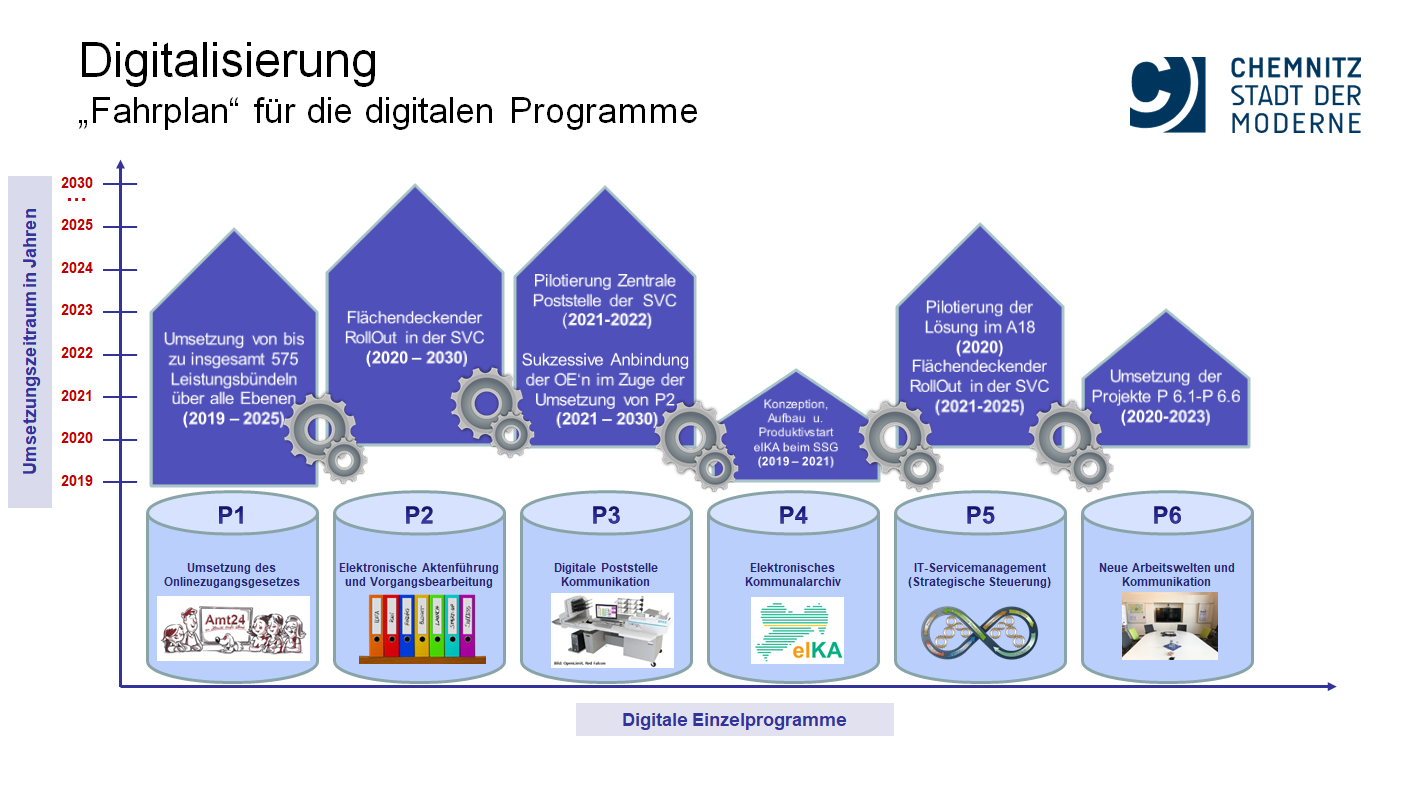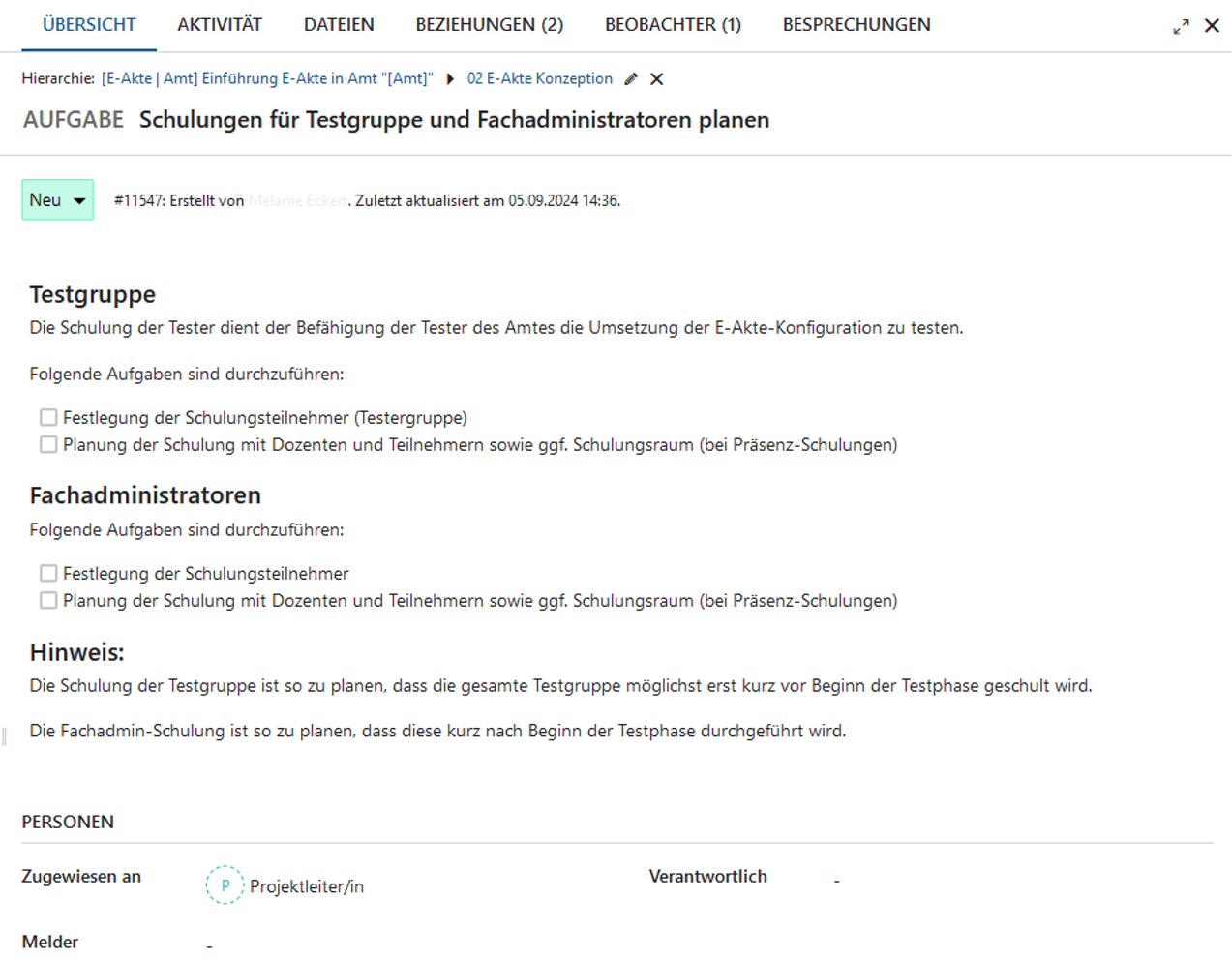
How Chemnitz, European Capital of Culture 2025, manages hundreds of projects for the Digital Agenda with OpenProject
Not just anyone can become a European Capital of Culture. Since 1985, the European Union has awarded this title to cities whose applications were convincing in six criteria of a multi-year selection process. These include long-term strategy, European dimension, cultural and artistic content, but also the ability to implement the project and the successful involvement of society and administration.
A city who manages to do this proves that they are capable of managing the largest and most complex projects, and Chemnitz in Saxony has achieved this: in 2025, Chemnitz proudly bears the title of “European Capital of Culture”, accompanied by a long list of events.
Out of the silos, a single source of truth was needed
Alexander Hoffmann is responsible for digitalization in Chemnitz. Hoffmann has a background in IT project management, was originally trained as a classic project manager (IT), but later switched to agile project management and attaches great importance to using the right approaches and tools for the job. “The added value lies at the process level,” he explains. Many years ago, he took on the task of setting up project management at the City of Chemnitz’s IT department. “There were a lot of projects that had to be implemented and there still are - and we had to get out of the silos.” And that’s where OpenProject came in. Hoffmann was already familiar with the software and also has direct and close contact with Chemnitz Hospital, which also uses OpenProject.

The most important motivation behind the project management in OpenProject is also to promote the digitalization of the City of Chemnitz internally and externally and also to provide the platform for other municipal projects, such as residents’ meetings or construction projects, of the City of Chemnitz. To this end, Chemnitz operates a self-hosted instance of OpenProject, in-house and completely in the city network. 2500 potential users could register and work with it, and there are also plans to offer the software to external partners and connect it to Nextcloud. The approach to open source is not ideological, but very pragmatic. Chemnitz also uses around 200 MS Project licenses, of which around one hundred will probably remain. The approach does not follow any ideology “If we halve the number, we will have recouped the costs for OpenProject,” says Hoffmann happily.
Low entry barriers with open source
Open source as a value in itself is also playing an increasingly important role as a decision-making factor in Chemnitz. “If we can use open source software, then we combine two opportunities: the entry barrier is lower, we can test and evaluate software without consultants, tenders and thoughts about purchasing licenses. This flexibility alone makes it worthwhile for us to increasingly rely on open source software.” And the fact that the IT architecture for open source software are transparent and comprehensible from the outset also plays a major role. “Whenever we make a purchase, we always check whether there are open source options, which is the first step for all cross-sectional applications, including project management. This is also a question of security,” confirms Hoffmann. “And the fact that we can always use free software solutions the way we want plays a role. It also has to be self-hosted; in many cases, externally hosted clouds are no (longer) an option.”
Implementation of the Digital Agenda
Chemnitz is not alone in this, but the topics of the Digital Agenda, such as the Online Access Act or the e-file and how access for citizens and stakeholders can be created in practice, are also on Hoffmann’s mind day in, day out. “Every e-file that we introduce is a project in a clearly defined tree structure. The “Digital Agenda” is the overarching element in OpenProject and each pillar is a sub-project.

Image source: City of Chemnitz, Roadmap of Digital Agenda
OpenProject is very well suited for this and we can also use it to directly inform the top management. They get an up-to-date status quickly and easily without us having to write extra reports.” Mayors who can read along directly in project management sounds unusual, and of course “we prepare the views for the decision-makers, but since we have introduced the software, it has made our work much easier.”
Project templates reduce workload to a fifth
For implementing these challenging goals, there are project managers who maintain the projects and keep their status up to date. Project templates in OpenProject (e.g. for the e-file) help to reduce the effort for new projects to 20% during planning. Chemnitz uses templates, checklists, wiki articles, and more in OpenProject, so that a project manager only has to adapt the project plan according to the new project.
Image source: City of Chemnitz, project template e-file in OpenProject
“It’s a matter of a few hours, and it frees up the project managers to concentrate on managing the teams and projects. They’re all happy for every bit of administrative work they’re spared,” shares Hoffmann.

Image source: City of Chemnitz, example work package template e-file in OpenProject
Although Chemnitz also operates a separate wiki, the wiki in OpenProject is used for all project-specific content. Time recording is also used, but only in the sense of overall time recording, i.e. estimated for projects, with a target/actual comparison for rough resource planning and personnel requirements planning. Meetings are also planned in OpenProject, “the project management software serves as a single source of truth for the many participants.”
Waterfall and agile: boards, tasks, sprints
Chemnitz combines classic project management with agile methods for its project work. Boards and tasks are used in the projects, even if “the projects of the Digital Agenda are mostly organized in a classic way, development assignments are managed agile with backlogs, roadmaps, sprints, sprint planning and so on. We use both approaches, including hybrid ones,” explains the department head. “Not all employees always use all the options that we and the software offer, nor do they have to. We have the backlogs module, but not everyone needs the burn-down and burn-up charts, story points, and sometimes the employee rights also prevent us from using various approaches, for example if this would make performance control and monitoring possible. But we work a lot with the basics, such as epics and the like.”
Configurable down to the last detail
The administration of the European Capital of Culture is also innovative: it defines its own project types and more and more using the project lists in OpenProject. The developers of OpenProject are now working on project phases, a feature that Chemnitz configured via tasks and milestones and thus automatically fills the timeline. This then almost automatically displays “endangered” projects or extended attributes, for example criteria such as “This is an important infrastructure project”. In a current project, the City of Chemnitz is currently introducing a new work package type “project” - this is also possible due to the flexible open source nature of the software.
Hundreds of projects at work
There are currently 345 projects being planned in Chemnitz, around 116 of which are active, and of which around 60 percent are digitalization projects. Other IT projects make up almost the entire remainder. “The Digital Agenda in particular has led to a huge increase in projects. Many new projects are only named in the beginning. They are given a short title and classification and still have to go through the process of specification to become a real ‘project’”. Only when the stakeholders and milestones and everything else have been defined clearly are the projects fully implemented in OpenProject. In the past, all of this was kept in Excel, but today the plans are already available in OpenProject via a link and are waiting to become a project at some point. “The many necessary budget processes beforehand make this necessary - and we can’t yet map them properly. But we are hopeful that we will be able to map this with a ‘project’ work package type at some point.”
Open source is more flexible than the proprietary competition
The conscious decision to use project templates for almost all project types makes everyday life easier for employees and managers. “It is now also a very conscious and comprehensible decision as to when a work package type becomes a project.” Once this is done, the project manager, for example, is also appointed straight away. “We have two views implemented in OpenProject: On the one hand, IT project planning with work package view ‘Project’ and the project list itself. This allows us to mix agile and classic projects - that’s priceless flexibility, not at all like the tight corset imposed by the proprietary competition.”
With OpenProject, Chemnitz has not only found the right tool to manage hundreds of projects efficiently but also created a sustainable foundation for future collaboration and innovation. By integrating the open source project management software into their digital strategy, the city is proving that transparency, flexibility, and self-reliance are key to successfully managing the Digital Agenda and the European Capital of Culture 2025.


